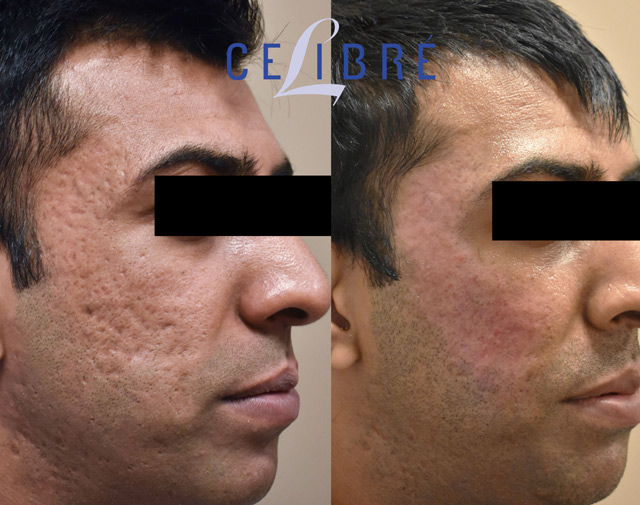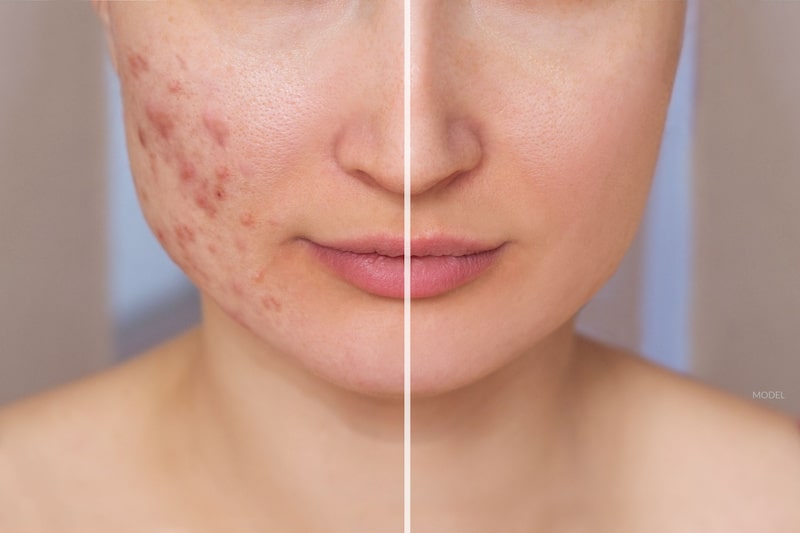Attain Smooth Skin with Specialized Acne and Acne Scars Treatment
Attain Smooth Skin with Specialized Acne and Acne Scars Treatment
Blog Article
Checking Out Skin Problem: Dealing With and determining Acne Scars for Healthier Skin
Acne marks stand for a substantial worry for individuals seeking to keep healthy and balanced skin, as they can affect both appearance and self-esteem. Recognizing the numerous kinds of scars, from atrophic to hypertrophic, is essential for identifying ideal therapy choices. While professional treatments like chemical peels and microneedling can be efficient, the significance of personalized treatment plans can not be overstated. In addition, preventative procedures play an essential duty in minimizing future scarring. As we check out these facets, one should think about just how the ideal approach can cause transformative results.
Understanding Acne Marks
Recognizing acne marks is important for any person who has experienced extreme acne, as these marks can have a lasting effect on both physical appearance and psychological wellness. When the skin goes through inflammatory feedbacks during active acne lesions, acne marks form. The intensity of scarring is often influenced by aspects such as the kind of acne, its period, and individual skin characteristics.
The body's natural healing process can lead to either atrophic marks, which appear as clinical depressions in the skin, or hypertrophic marks, which are elevated and result from overproduction of collagen. Additionally, the mental toll of acne marks ought to not be undervalued; lots of people report sensations of shame, anxiousness, and lowered self-confidence. This psychological problem can impact social communications and general top quality of life.
Attending to acne marks calls for a comprehensive understanding of their development and influence. Recognition of the possibility for long-lasting repercussions connected with neglected scars can motivate individuals to look for appropriate treatments. Early intervention and reliable monitoring methods can substantially enhance skin appearance and improve psychological resilience, stressing the relevance of comprehending the complexities bordering acne marks.
Kinds Of Acne Marks
Acne marks can be categorized into distinctive kinds, each showing special qualities and requiring details treatment approaches. The primary types of acne marks consist of atrophic, hypertrophic, and keloid scars.

Hypertrophic marks, on the other hand, are increased above the skin level and are the result of excessive collagen production throughout the healing process. They normally stay within the limits of the original acne lesion. Keloid scars are similar yet expand beyond the initial injury website, developing bigger, increased areas that can be itchy or painful.
Recognizing these kinds of scars is important for picking suitable therapy alternatives. Different scars might react far better to certain treatments, such as laser therapies, fillers, or surgical treatments, stressing the importance of a customized method to acne mark administration.
Identifying Your Marks
When examining the look of your skin, it is crucial to properly determine the kind of scars present, as this will inform the most effective therapy technique. Acne scars usually drop into two classifications: hypertrophic and atrophic scars. Atrophic scars, which are one of the most usual, look like anxieties or indentations on the skin. These can better be categorized into ice-pick marks, boxcar scars, and rolling marks, each showing distinct qualities and needing various methods for assessment.
Hypertrophic scars, on the other hand, are increased and take place because of extreme collagen manufacturing throughout the recovery process. Acknowledging the details attributes of your marks-- such as depth, width, and appearance-- is vital for proper recognition. In addition, consider the distribution of scars throughout your skin, as learn this here now this can suggest the seriousness and period of the acne problem.
Engaging with a skin specialist can provide beneficial insights into the nature of your marks, assisting in the differentiation between numerous kinds. A complete understanding of your scars will inevitably bring about an extra tailored and efficient treatment plan, ensuring a more clear and much healthier skin.
Treatment Alternatives Available
Determining the particular kind of acne scars present on your skin prepares for checking out efficient therapy options. Typical kinds of acne scars include atrophic (depressed), hypertrophic (increased), and post-inflammatory this contact form erythema.
For atrophic scars, options such as chemical peels, microneedling, and laser resurfacing are extensively used. Chemical peels off make use of acids to eliminate the outer layer of skin, advertising new cell growth.
Hypertrophic scars can be treated with corticosteroid injections to flatten the scar or laser therapy to reduce redness and boost appearance. skin rejuvenation treatments. Silicone gel sheets and stress dressings may additionally help in handling increased marks
Furthermore, facial fillers can briefly fill up in depressions from atrophic scars, while medical excision might be appropriate for severe situations. Each treatment choice has its considerations and benefits, making it necessary to talk to a skin doctor. They can provide customized recommendations based upon the kind and seriousness of your scars, in addition to your skin kind and general health.
Tips for Avoidance
Efficient prevention approaches can substantially reduce the probability of developing acne marks. Using non-comedogenic products aids prevent stopped up pores, which can exacerbate acne.
Staying clear of the impulse to pick or pop acne lesions is critical, as this can result in deeper skin damages and increase the danger of scarring. Rather, take into consideration using a chilly compress or non-prescription treatments to reduce swelling and inflammation.
Sunlight defense is another important element of avoidance; ultraviolet (UV) rays can darken scars and impede the recovery procedure. Using a broad-spectrum sun block with at the very least SPF 30 daily can protect the skin and advertise even recovery.
Last but pop over to this site not least, preserving a balanced diet regimen rich in minerals, vitamins, and antioxidants supports skin wellness and healing. Remaining moisturized and handling stress and anxiety levels can additionally play a substantial role in minimizing acne flare-ups. By implementing these methods, individuals can substantially decrease their possibilities of creating acne scars.

Verdict
To conclude, understanding and identifying acne scars is essential for effective treatment and accomplishing much healthier skin. Different kinds of acne marks, consisting of atrophic and hypertrophic scars, demand details interventions tailored to private demands. Treatment alternatives range from chemical peels and microneedling to corticosteroid injections, highlighting the significance of getting in touch with a dermatologist. Additionally, adopting a mild skin care routine and protecting the skin from UV direct exposure can dramatically add to the avoidance of more scarring and general skin health and wellness.
The body's natural healing procedure can result in either atrophic marks, which appear as depressions in the skin, or hypertrophic marks, which are increased and result from overproduction of collagen. They are more split right into 3 subtypes: ice pick scars, boxcar marks, and rolling scars. Acne marks normally fall right into 2 classifications: atrophic and hypertrophic marks. These can additionally be categorized right into ice-pick marks, boxcar scars, and rolling marks, each exhibiting distinctive attributes and requiring various methods for assessment.
Different types of acne scars, including hypertrophic and atrophic scars, demand particular treatments tailored to specific requirements.
Report this page